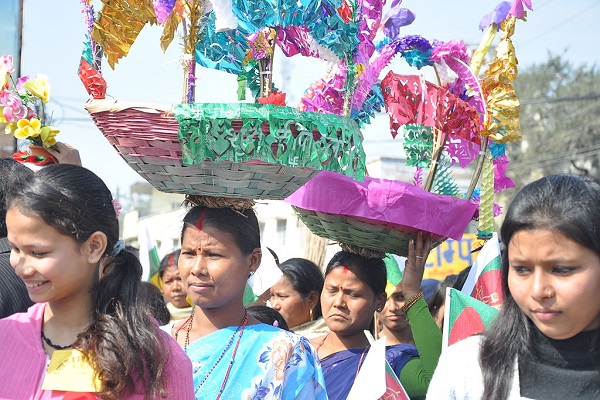
Maghi Festival for Sikhs: Origins and Present Day Celebrations, Traditions and Rituals
- By Elisa Meyer --
- 14 Jan 2016 --
![By Bishal gauro (Own work) [CC BY-SA 3.0], via Wikimedia Commons](http://www.worldreligionnews.com/wp-content/uploads/2016/01/Maghi.jpg)
The Sikh Maghi Festival begins January 14.
The Maghi festival is a religious, cultural and seasonal festival which marks the start of the agricultural year and increasing daylight time. It is also the time when Sikhs observe the sacrifice done by forty Sikhs who once fought on the side of Guru Gobind Singh Ji.
Maghi Festival for Sikhs: Origins and Present Day Celebrations[/tweetthis]
The history of Maghi festival in Sikhism entails a long history. The event is closely linked with Guru Gobind Singh's life. His presence and teachings have made a considerable impact on the Sikh religion. The Guru battled the Mughal army multiple times during his lifetime. The Guru codified the various religious practices in the latter part of the 1600s. India was ruled by the Mughals at that time (1555 to 1707). The imperial Mughal army frequently fought with followers of a new religion called Sikhism.
The Mughals were known in history to persecute people belonging to other religions- which were opposed by the Sikh gurus. The Sikhs were forced to develop a number of military strategies to counter the imperial army. Guru Gobind Singh was known for the military evolution of the community. He understood that for the fledgling Sikh religion to survive, militarism of the faith is necessary. He also took a number of other steps, like forbidding Sikhs to eat animals prepared the halal way. This resulted in a conflict between Sikhs and Muslims.
#Maghi-14th January has been a special festival since childhood as it highlights the eclectic identities of Punjab. https://t.co/zRI5wcHoQV
— Kabir (@Maleccha) January 14, 2016
The most important battle between Sikhs and Mughals were fought at Anandpur. This battle saw forty soldiers belonging to the Guru abandoning their cause due to the length of time in battle and then the subsequent siege. The Maghi festival observes the events that occurred on December 29, 1705, when the 40 soldiers who once abandoned the battle came back and fought on the front lines against the Mughal army. All forty soldiers laid down their lives. The Guru declared them to be martyrs. They achieved liberation and they were first blessed and then cremated in Muktsar city, Punjab.
In modern times, festival usually takes place on January 14 on the initial day of the Maghar Sangrand month. The festival starts with a Guru Granth Sahib recital. The biggest Maghi festival occurs in Muktsar city. The city name is the literal translation of “pool of liberation” in Punjabi. Large fairs are organized. Pilgrims take holy dip in the Sarovar's sacred waters and visit a number of shrines. Pilgrims march in large numbers to Gurdwara Tibbi Sahib from the principal shrine to conclude the three-day long celebration.
Maghe Sangranti / Maghi Festival special food in #Nepal. (by @BhusalJun pic.twitter.com/EHgqb5jMg7
— … धर्तीको जुन…. (@BhusalJun) January 14, 2016


















